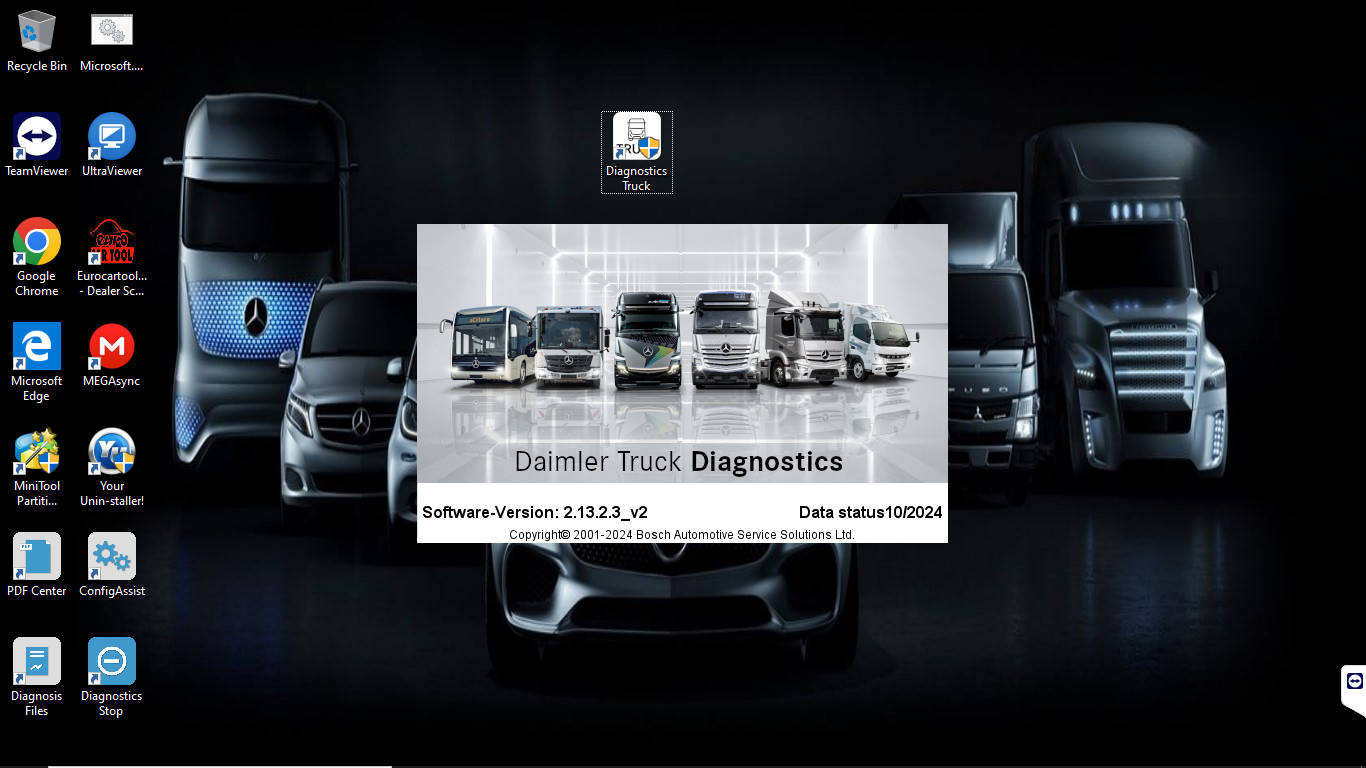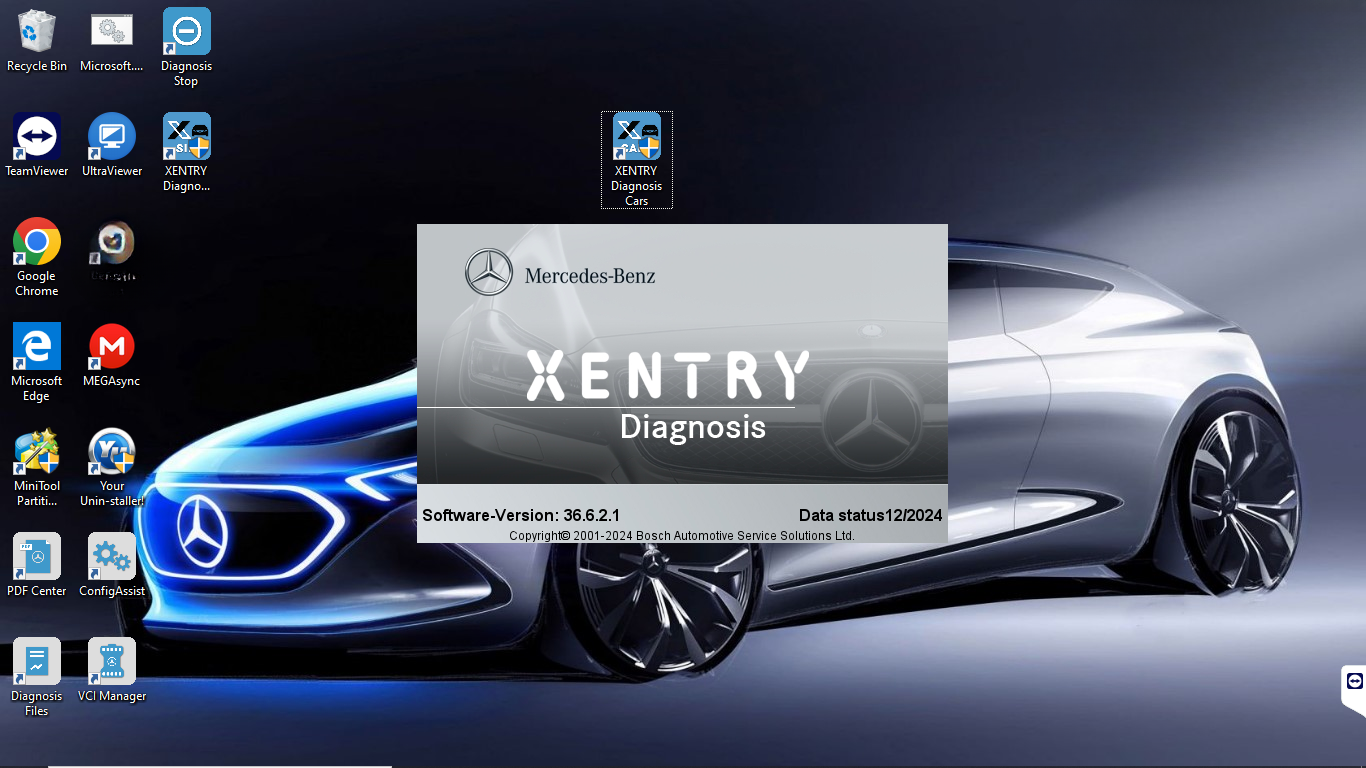Xentry and Xentry Truck: Which Mercedes Diagnostic Software Is Right for You?
When it comes to diagnosing and coding Mercedes-Benz vehicles, Xentry is the official software suite trusted by technicians worldwide. However, many users are unclear about the distinction between Xentry and Xentry Truck. While both tools serve similar purposes—diagnosing faults, reading ECU data, and performing coding tasks—they are tailored to completely different types of vehicles.
In this article, VCCarTool breaks down the key differences between Xentry (for passenger cars) and Xentry Truck (for commercial vehicles), helping workshops and technicians choose the right solution for their needs. Let’s explore which version is best suited for your diagnostic work.

Overview of Xentry and Xentry Truck
Xentry is the official diagnostic software developed by Daimler AG for Mercedes-Benz vehicles. It serves as the primary tool used by dealerships and workshops for reading and clearing fault codes, performing control unit coding, programming, and conducting system-level diagnostics. Xentry is part of the Mercedes-Benz STAR Diagnostic System, often used with devices like C4, C5, or OEM DoIP interfaces.
However, Daimler has segmented its diagnostic software into two major categories:
1. Xentry (for Passenger Cars and Vans)
This version is specifically designed for:
- Mercedes-Benz cars (e.g. C-Class, E-Class, S-Class)
- Smart vehicles
- V-Class and other light vans
Xentry covers comprehensive diagnostics, SCN coding (with online access), variant coding, guided tests, ECU programming, and adaptations tailored to these vehicle types.

2. Xentry Truck (for Commercial Vehicles)
Xentry Truck is tailored for:
- Mercedes-Benz trucks (e.g. Actros, Arocs)
- Buses under Daimler (e.g. Setra, Travego)
- Heavy-duty vans and Freightliner models in specific regions
Xentry Truck includes all necessary functionalities for the heavier class of vehicles, such as brake system diagnostics, transmission programming, AdBlue system reset, and advanced diagnostic paths that reflect commercial vehicle architecture.
While both versions share a common structure and user interface, Xentry Truck contains datasets, modules, and protocols specifically for trucks and buses, which are not available in the standard Xentry version.

Comparison Between Xentry and Xentry Truck
While Xentry and Xentry Truck are both developed by:
| Feature | Xentry (Passenger Cars) | Xentry Truck (Commercial Vehicles) |
|---|---|---|
| Supported Vehicles | Mercedes-Benz cars, vans, Smart | Mercedes-Benz trucks, buses, Setra, Freightliner |
| System Architecture | Optimized for passenger car ECU layout | Designed for truck/bus control systems and ECUs |
| Diagnostic Protocols | Standard UDS, KWP, DoIP | Advanced truck protocols (e.g., J1939, truck-specific layers) |
| Coding & Programming | SCN coding, variant coding, ECU replacement | Component adaptation, ECU programming for heavy-duty systems |
| Service Functions | Service resets, brake bleeding, calibrations | Regeneration (DPF), AdBlue reset, clutch calibration |
| Interface Compatibility | SD Connect C4, C5, C6 DOIP | SD Connect C4/C5 with Truck add-ons or Xentry Kit 3 |
| Use Case | Dealerships & workshops for cars | Fleet maintenance, heavy vehicle repair centers |
| Software Structure | Installed via OpenShell and AddOns | Uses Xentry Truck AddOns and specific database files |
Key Differences:
- Vehicle Coverage: Xentry supports light-duty vehicles; Xentry Truck focuses on heavy-duty trucks and buses.
- Coding Functions: Passenger cars prioritize comfort and safety systems, while commercial vehicles focus on drivetrain durability and emission compliance.
- Repair Procedures: Truck diagnostics often include pneumatic, hydraulic, and load-specific functions not present in passenger cars.
Download & Setup Guide for Xentry and Xentry Truck
Whether you are servicing Mercedes-Benz passenger vehicles or commercial trucks, setting up the correct version of Xentry software is crucial for effective diagnostics. Below is a simplified guide to help you get started with both Xentry and Xentry Truck.
1. System Requirements
Before installation, ensure your laptop meets the following minimum specs:
- OS: Windows 10 Pro (64-bit)
- CPU: Intel Core i5 or higher
- RAM: Minimum 8GB (16GB recommended)
- Storage: SSD with at least 256GB free
- Ports: At least one USB and LAN port
- Battery: Stable power source required during coding/programming
2. Required Tools
- Diagnostic Interface: SD Connect C4, C5, or OEM C6 DoIP
- Mercedes Xentry Software Installer (OpenShell for cars, Truck AddOn for trucks)
- Xentry Activation License (official or offline patched version)
- DTS Monaco or Vediamo (optional for advanced coding)
- TeamViewer/Anydesk (for remote setup with VCCarTool)
Once you have everything, you can order Xentry software directly on the website at here or contact VCCarTool via WhatsApp +1 (901) 414-1927 for ordering support.
Frequently Asked Questions (FAQ)
1. Can I install both Xentry and Xentry Truck on the same laptop?
Yes, but it’s recommended to use separate partitions or separate Windows installations (via dual boot or virtual machines) to avoid conflicts between databases, drivers, and configuration files.
2. Do I need different hardware for Xentry Truck?
Not necessarily. SD Connect C4, C5, or C6 DOIP can be used for both Xentry and Xentry Truck, but ensure your device is properly configured and firmware is compatible with truck protocols if working on commercial vehicles.
3. Can I perform SCN Coding with Xentry Truck?
SCN (Software Calibration Number) coding is mostly available in Xentry OpenShell for passenger cars. For trucks, coding and programming typically depend on offline adaptations or specific online Daimler credentials, which may be limited.
4. Is Xentry Truck available in simulation mode like regular Xentry?
Yes. Xentry Truck also offers a simulation mode, allowing you to navigate menus, view diagnostic functions, and practice operations without connecting to a live vehicle.
5. Which vehicles are supported by Xentry Truck?
Xentry Truck supports:
- Mercedes-Benz Actros, Arocs, Axor
- Unimog, Setra buses, and other commercial vehicles
- Select models under Freightliner and Western Star (in North America)
- Euro 4, 5, and 6 compliant trucks
6. My diagnostic interface works with Xentry but not Xentry Truck. Why?
Check if your interface has truck-specific firmware and that it’s configured properly in the SD Connect Toolkit. Older C4 interfaces may not support DoIP or newer CAN-based communication in trucks without firmware updates.
7. Can VCCarTool install Xentry Truck remotely?
Absolutely. VCCarTool provides remote installation and configuration support for both Xentry and Xentry Truck, including activation, interface setup, and tutorial walkthroughs.
8. Does Xentry Truck support AdBlue Reset and DPF Regeneration?
Yes. Xentry Truck includes service functions like AdBlue resets, DPF regeneration, clutch calibration, and air system diagnostics, which are essential for heavy-duty maintenance.
Both Xentry and Xentry Truck are powerful diagnostic tools developed by Daimler to serve different segments of the Mercedes-Benz vehicle lineup. While Xentry is tailored for passenger cars and vans, Xentry Truck is engineered for commercial vehicles, including trucks and buses. Each version offers unique functions, communication protocols, and diagnostic depths to match the complexity of its vehicle class.
Choosing the right version depends on the type of vehicles your garage services, the coding or programming tasks you need, and the level of support your business requires. For workshops that work with both vehicle categories, a dual-software setup ensures maximum coverage and efficiency.
At VCCarTool, we provide both Xentry and Xentry Truck packages, complete with remote setup, configuration, and expert support — helping you unlock the full diagnostic power of Mercedes-Benz systems.
Still unsure? Contact VCCarTool via WhatsApp:+1 (901) 414-1927 today for the right solution for your garage.
